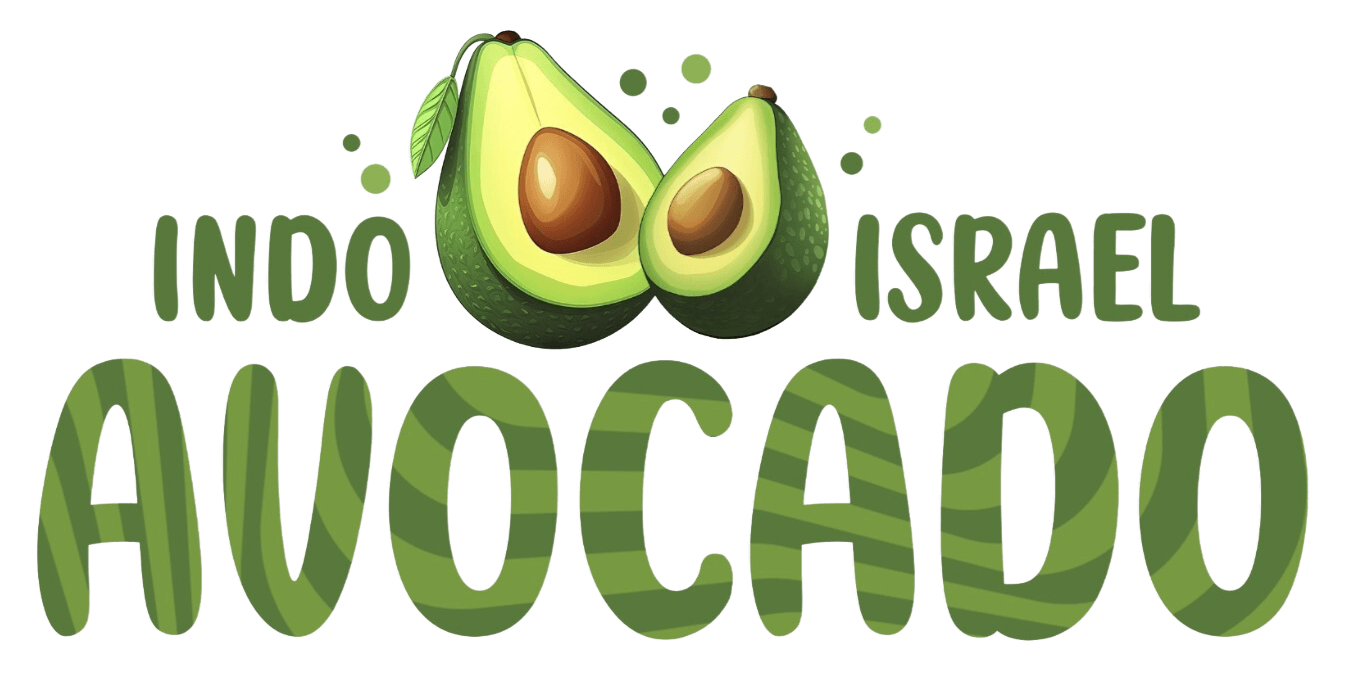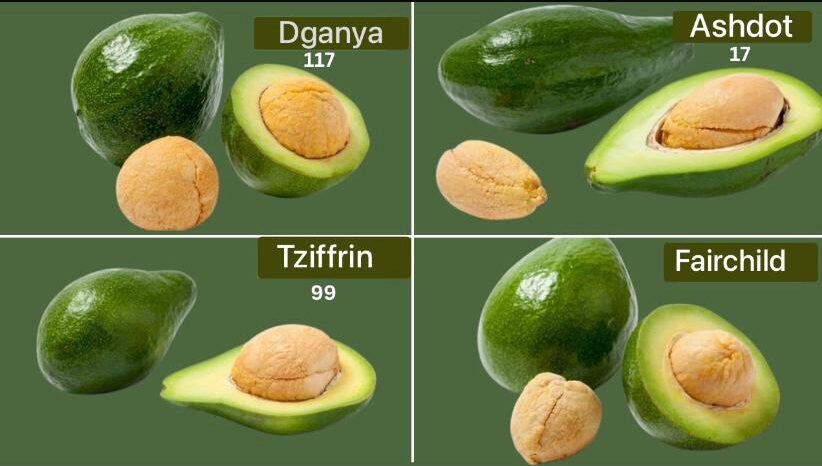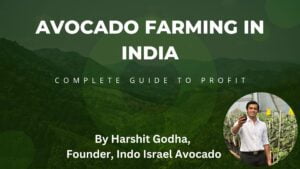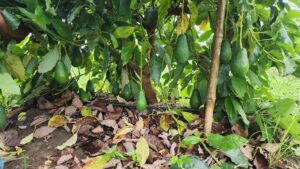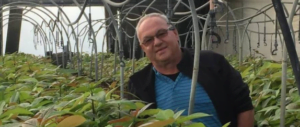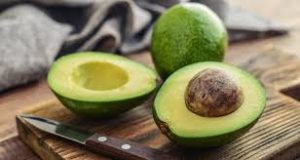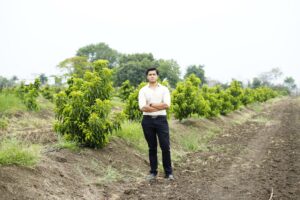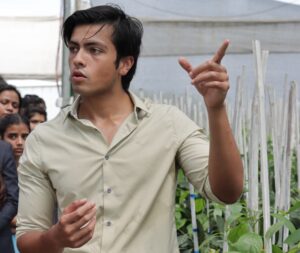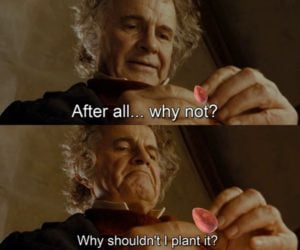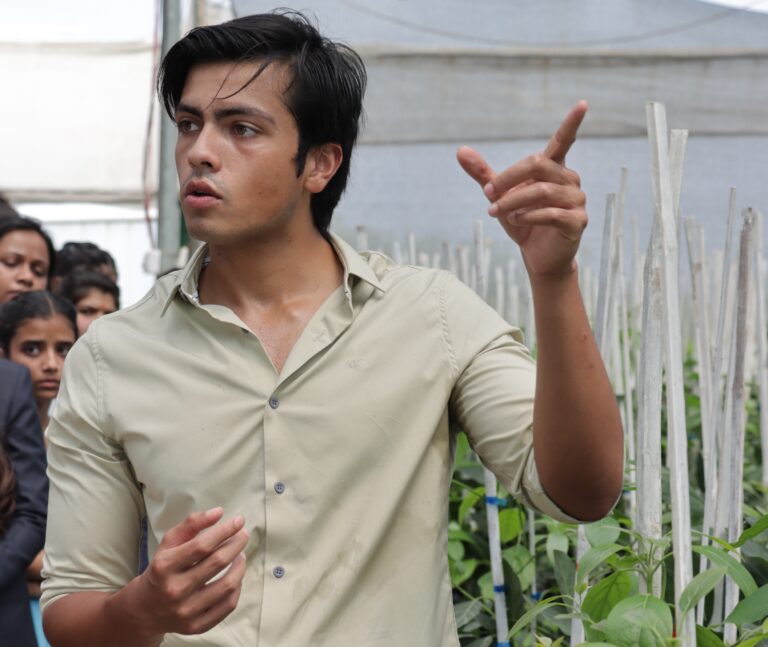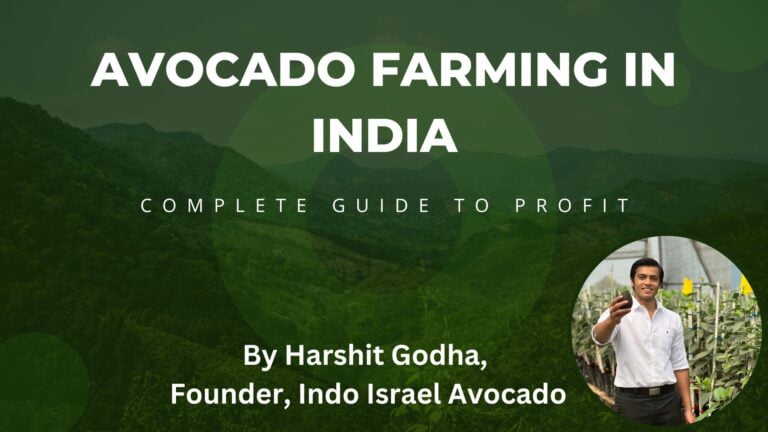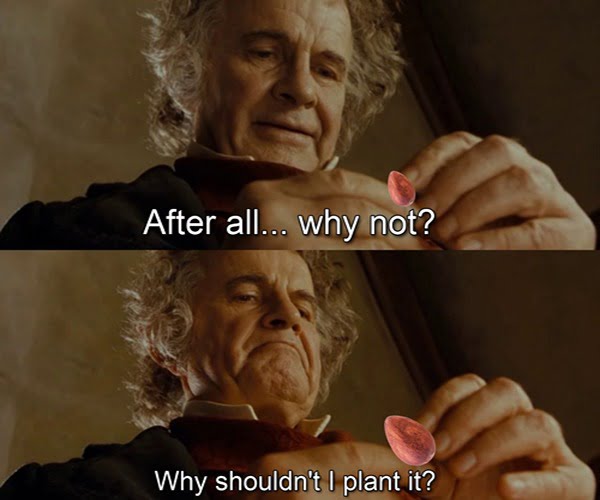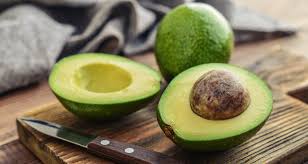Contents
Dganya 117-Seedling
Dganya 189-Seedling
Ashdot 17-Seedling
Fairchild-Seedling
Tziffrin 99-Seedling
Zutano-Seedling
Day-Seedling
Duke 7-Clonal
Dusa-Clonal
Bounty-Clonal
Rootstocks
Avocado rootstocks were thoroughly reviewed by BenYa’acov and Michelson (1995). The major attributes sought in avocado rootstocks are resistance to Phytophthora cinnamomi, salinity tolerance, adaptability to calcareous soils, smaller trees, and high sustainable yields of quality fruit (Whiley, 1992). Willingham et al. (2001, 2006) and Coates et al. (2011) reported that rootstocks can significantly influence the incidence of anthracnose on fruit, while others have observed their effect on the incidence of internal fruit disorders (Smith, 1993; Whiley, 2001). Mickelbart et al. (2007b) reported significant differences in nutrient uptake and yield of ‘Hass’ as influenced by different clonal rootstocks.
Zutano as a Rootstock
- This Mexican × Guatemalan hybrid is noted for its tolerance of saline conditions and cold. For this reason, it is extensively used as a seedling rootstock in Sunraysia, Australia where water quality is marginal for avocados. ‘Zutano’ is also the main rootstock used in New Zealand and is sometimes used as a ‘nurse’ seed when cloning rootstocks in California and South Africa (Alexander, 1983b; R. Hofshi, Fallbrook, California, 2001, personal communication).
- Seedling Rootstock: High variability in orchard growth
- Excellent graft potential, vigour is high
- Yield is High, but highly variable due to lack of genetic uniformity between each seed
- It gives rise to variable trees, and has a low tolerance to PRR
Bounty
- Survivor tree (i.e. a tree that survived in an orchard with a known PRR problem, Dr. Anton Hough) / ‘Bounty’ is another PRR tolerant clonal rootstock (Mexican x Guatemalan)
- Has Low-Medium vigour
- Bounty rootstock appears to perform best in poor quality soils, waterlogged soils, heavy soils and generally in the poorest quality soil types.
- Phytophthora tolerance of Bounty appears to be similar to Duke 7 rootstock.
- Maluma propagated on Bounty in poor quality soils had an equivalent yield compared to Dusa and other rootstocks like Velvick in many of his orchard blocks (ANFIC, 1984).
- Tree size is smaller than all other rootstocks and the trees appear much calmer.
- In summary, the Bounty avocado rootstock is recommended for planting in any marginal soil types including waterlogged or wet, heavy soils or in marginal climates affecting avocado production. Yield levels under these conditions would be similar to avocado trees grown in good soils on other rootstocks.”
- Yield is medium-High
- ‘Bounty’ accounted for 16% of the South African Avocado Nurserymen’s’ Association nursery tree sales and was the third most popular rootstock after ‘Dusa’ and ‘Duke 7’
‘Ashdot’ series (Israel)
- Predominantly West Indian, the ‘Ashdot’ series originated in the ‘Ashdot’ orchard in Israel. Trees in this series are used as seedling rootstocks and several selections have performed well for different scions.
- ‘Ashdot 17’ gave high cumulative yields in the Jordan Valley of Israel when grafted with ‘Pinkerton’. ‘
- Ashdot 17’ is recommended for new orchards where calcareous soils and/or salinity are present.
- A very important rootstock in Israel selected for its high productivity and ability to tolerate high salt and high soil alkalinity.
- Early bearing and highly productive when grafted to Hass in Australia.
- Ashdot when grafted to Hass, results in a very compact tree with dwarfing characteristics showing good tree efficiency, lending itself to high density planting (ANFIC,1984)
Duke 7
- ‘Duke 7’ was selected in the 1950s but was not released commercially as a clonal rootstock until the mid-1970s.
- It is a Clonal Rootstock, provides orchard uniformity, and management is easier.
- ‘Duke 7’ is intolerant of waterlogging and should only be used on deep, well drained soils. Neither rootstock appears suitable for replant situations in California.
- There is accumulating evidence that ‘Duke 7’ is a productive rootstock for ‘Hass’. However, experience in South Africa and Australia has shown that ‘Duke 7’ is susceptible to trunk canker caused by P. cinnamomi. In 1997, ‘Duke 7’ was still the recommended rootstock for South African ‘Hass’ orchards.
‘Dusa’ (formerly ‘Merensky 2’) (South Africa)
- It is a Clonal rootstock (Mexican x Guatemalan), survivor tree, provides orchard uniformity, hence management is easier
- ‘Dusa’ was selected from a seedling of unknown origin at Westfalia Estate, South Africa (J.S. Köhne, Tzaneen, South Africa, 2011, personal communication)
- Hass’ trees grafted on to ‘Dusa’ are significantly more tolerant of PRR and more productive than ‘Hass’ on ‘Duke 7’ (Roe et al., 1997; Menge, 1998, 2002; KremerKöhne and Mukhumo, 2003; Rose, 2003; Smith et al., 2011)
- ‘Dusa’ is thought to be of Guatemalan × Mexican origin (Ashworth and Clegg, 2003) and shows good tolerance to cold winters and high salinity conditions. This has led to a rapid increase in the popularity of ‘Dusa’, and a strong decline in the popularity of ‘Duke 7’. Since 2002, ‘Dusa’ has been made available to avocado growers in several countries and continues to gain popularity
Tziffrin 99
- Suitable for light soils
- Most popular rootstock in Peru, since the soil of Peru is sandy
- The rootstock is also tolerant to calcareous and salinity but better performs in sandy soil than in clayey soil.
- Vigor is Medium
- Compatible with Ettinger, Hass, Fuerte, Arad, Pinkerton, Lamb Hass, Reed
Fairchild
- Most vigorous, most tolerant to saline and calcareous soil
- Starts yielding earlier than all other rootstock varieties in Israel conditions
- Requires more pruning and spacing
- Productivity is high
- Suitable for light, medium soils
- Medium resistance to Verticillium
- Suitable for almost all the varieties
- Sensitive to cold
Day
- Day is similar to Ashdot and Dganya, is a seedling rootstock
- Has high productivity
- Works best on medium soil type
- Has medium vigour
- Soil salinity tolerance is medium
- Produces best quality fruits when used as rootstock in varieties like Pinkerton and Lamb hass
- Suitable for extreme weather
Dganya 117
- A very important/widespread rootstock in Israel selected for its high productivity and ability to tolerate high salt and high soil alkalinity
- Very uniform growing habit
- Early bearing and highly productive when grafted to Hass in Australia.
- When grafted to Hass, results in a very compact tree with dwarfing characteristics showing good tree efficiency, lending itself to high density plantings
- ‘Dganya 117’ were superior yielding rootstocks when grafted with ‘Fuerte’
- For ‘Ettinger’ trees planted in heavy calcareous soils with high salinity, , ‘Dganya 117’ is the preferred rootstocks. (BenYa’acov et al., 1995a; E. Lahav, Bet Dagan, Israel, 2011, personal communication)
Dganya 189
- Similar to dganya 117, it is a rootstock with medium productivity
- Suitable for medium soil type
- The vigour of this rootstock plant is high
- High verticillium resistant
- Water salinity tolerance is medium
- The best compatible varieties are GEM and Pinkerton
Zutano (California) is also used as a variety. you can find the details about the variety here (https://indoisraelavocado.com/wp-admin/post.php?post=1465&action=edit)
You can watch these videos for detailed information about the rootstocks
References
Alder, G. (2024) Avocado variety profiles, Greg Alder’s Yard Posts: Southern California food gardening. Available at: https://gregalder.com/yardposts/avocado-variety-profile/
Alder, G. (2024) Avocado rootstocks: What do they matter?, Greg Alder’s Yard Posts: Southern California food gardening. Available at: https://gregalder.com/yardposts/avocado-rootstocks-what-do-they-matter/.
Alexander, 1983b; R. Hofshi, Fallbrook, California, 2001, personal communication, The Avocado Botany, Production and Uses 2nd Edition,169
ANFIC: The Australian Nurserymen’s Fruit Improvement Company (2024) ANFIC. Available at: https://anfic.com.au/.
Ashworth V., Clegg M. (2003). Microsatellite markers in avocado (Persea Americana Mill.): Genealogical relationships among cultivated avocado genotypes. The journal of heredity 94:407-415
Ben-Ya’acov, A., Michelson, E., Sela, I. and the avocado growers team at Kibbutz Ha’Ogen (1995a) A field study of seeded avocado rootstocks and scion sources: final report on experiments planted as commercial orchards. X. Experiments at Kibbutz Ha’Ogen, planted in 1977. Alon Hanotea 49, 506–511
Ben-Ya’acov, A. (1995b) A comparison between Mexican and West Indian rootstocks for the Ettinger cultivar at Kvutzat Shiller, Israel. California Avocado Society Yearbook 79, 165–169
crane, J.H. (2002) cultivars and rootstock, The Avocado Botany, Production and Uses 2nd Edition, pp. 200–234.
Dr.Nathan, R. (2022)Avocado insider. Harshit Godha. Available at: https://youtube.com/playlist?list=PL-PXCpXZWvH6Z7kORBIJ1frzLXLgb60G8&si=QC_8sr-_E6AWHVI3.
Filter and find the avocado Rootstock that is right for your unique growing area (2021) Canacado. Available at: https://canacado.com/
Godha, H. (2024) Pioneering commercial avocado farming in India, Indo Israel Avocado. Available at: https://indoisraelavocado.com/.
Köhne, J.S. and Kremer-Kohne, S. (1995) Picking Hass avocados without pedicels. South African Avocado
Growers’ Association Yearbook 18, 66.
Roe et al.,(1997); Menge, (1998, 2002); KremerKöhne and Mukhumo, (2003); Rose, (2003); Smith et al., (2011) cultivars and rootstock, The Avocado Botany, Production and Uses 2nd Edition, pp. 212-263′
Whiley, A.W., Schaffer, B.A. and Wolstenholme, B.N. (2002) The avocado botany, production, and uses. 2nd edn. Queensland, Australia: CABI Pub.
